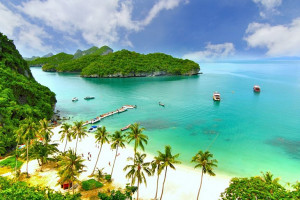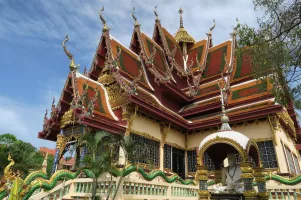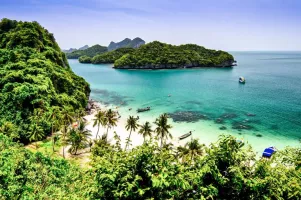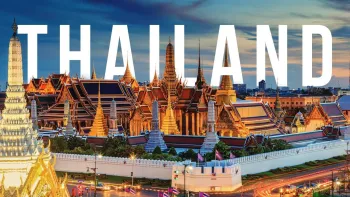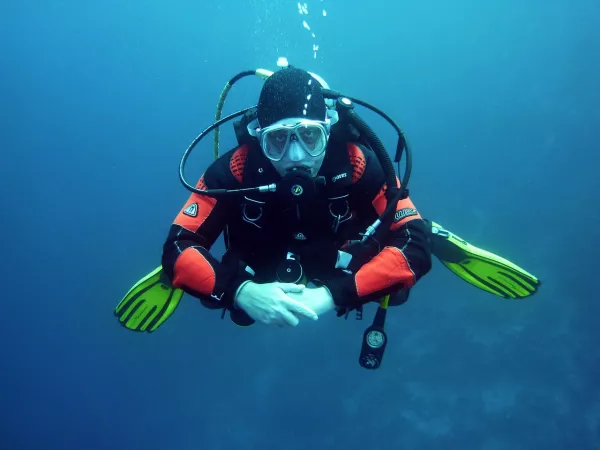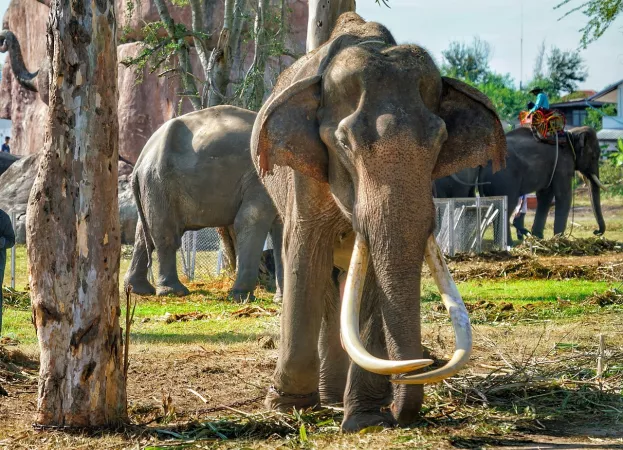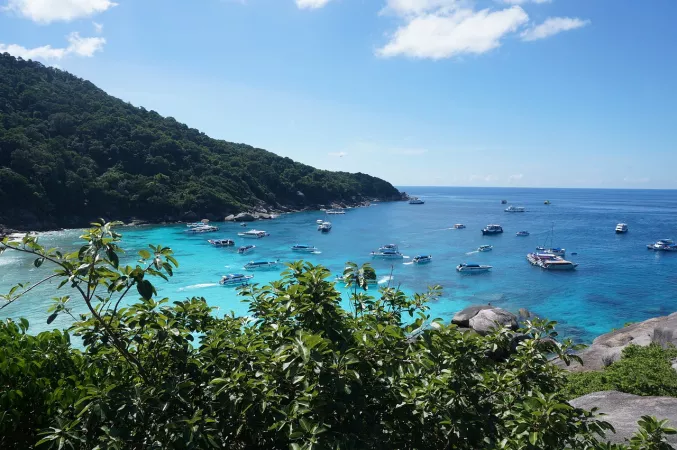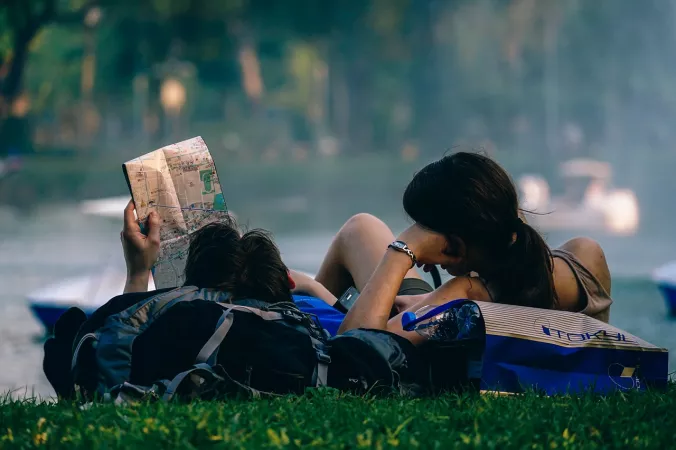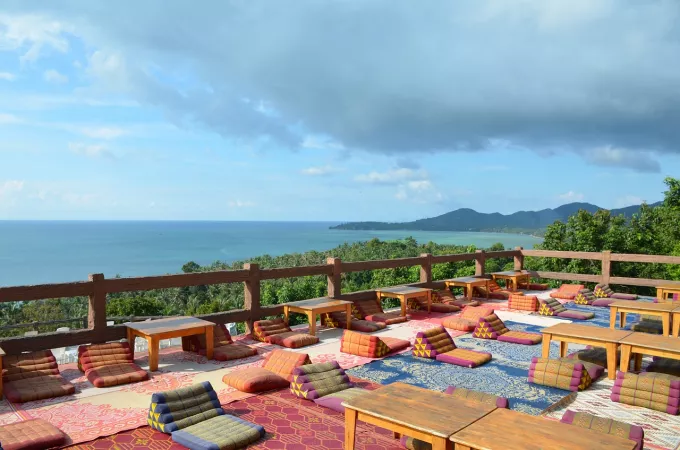
Koh Phangan Travel Guide
Koh Phangan, located in Thailand, is a tropical paradise known for its stunning beaches, vibrant nightlife, and spiritual retreats. The island is famous for its Full Moon Party, where thousands of travelers gather to dance under the moonlight. With lush jungles, crystal-clear waters, and a laid-back atmosphere, Koh Phangan offers a perfect blend of relaxation and adventure.Top Attractions in Koh Phangan
- Haad Rin Beach
- Wat Phu Khao Noi
- Thong Nai Pan Noi Beach
- Mu Ko Ang Thong National Park
- Phaeng Waterfall
Koh Phangan is Famous for
Full Moon PartyWhat's Great about Travelling to Koh Phangan?
- Beautiful beaches and crystal-clear waters
- Rich cultural and spiritual experiences
- Exciting nightlife and beach parties
What's Not So Great about Travelling to Koh Phangan?
- Can get crowded during peak tourist seasons
- Limited public transportation options
- Monsoon season may affect travel plans
Travel Tips for Koh Phangan
- Check visa requirements before traveling
- Use sunscreen and stay hydrated due to the tropical climate
- Be cautious of your belongings in crowded areas
Important Koh Phangan trip information
- Ideal Duration: A week to fully enjoy the island
- Best Time to Visit: December to April for the dry season
- Nearby Airports and Railway Stations: The nearest airport is Koh Samui Airport, and the closest railway station is in Surat Thani
Per Person
52,000
*EXCLUDING APPLICABLE TAXES 5.0 Ratings
( 393 Reviews )
( 393 Reviews )
Per Person
40,000
*EXCLUDING APPLICABLE TAXES 5.0 Ratings
( 101 Reviews )
( 101 Reviews )
Per Person
48,900
*EXCLUDING APPLICABLE TAXES Per Person
43,999
*EXCLUDING APPLICABLE TAXES FAQ's on Koh Phangan
Q1: What is the best time to visit Koh Phangan?
The best time to visit Koh Phangan is during the dry season from December to April when the weather is sunny and pleasant, making it ideal for beach activities and exploring the island. However, if you are interested in experiencing the famous Full Moon Party, which takes place monthly on Haad Rin Beach, plan your trip around the full moon. Keep in mind that accommodations can get booked up quickly during this period, so it's advisable to make reservations in advance.
Q2: Do I need a visa to travel to Koh Phangan?
Most tourists visiting Koh Phangan for a short stay do not need a visa if they are from visa-exempt countries. Travelers from many countries are granted a 30-day visa exemption upon arrival by air or 15 days if arriving by land. However, it's essential to check the specific visa requirements based on your nationality before traveling to ensure a smooth entry into Thailand.
Q3: What are the must-visit attractions in Koh Phangan?
Koh Phangan offers a diverse range of attractions for visitors to explore. Some of the must-visit places include the stunning beaches like Haad Rin, Thong Nai Pan, and Bottle Beach. Nature lovers can explore the lush jungles of Than Sadet National Park and the magical Phaeng Waterfall. Don't miss the opportunity to experience the vibrant nightlife at the Full Moon Party on Haad Rin Beach, or visit the Wat Phu Khao Noi temple for a cultural experience. For a tranquil retreat, head to the peaceful Mae Haad Beach or take a boat trip to the nearby Angthong Marine Park.
Q4: Is Koh Phangan a safe place to travel?
Koh Phangan is generally a safe destination for travelers. However, like any other tourist hotspot, it's essential to remain cautious and aware of your surroundings, especially in crowded areas or during late-night parties. Avoid walking alone on secluded beaches at night and take necessary precautions to safeguard your belongings. It's advisable to drink responsibly during the Full Moon Party and other events to ensure a safe and enjoyable experience. Overall, exercising common sense and following basic safety guidelines will help you have a trouble-free trip to Koh Phangan.
Q5: What is the local currency in Koh Phangan and can I use credit cards?
The local currency in Koh Phangan is the Thai Baht (THB). While credit cards are accepted at larger establishments such as hotels, resorts, and upscale restaurants, it's recommended to carry cash for small purchases, street food vendors, and local markets. ATMs are widely available in popular tourist areas like Thong Sala and Haad Rin, but it's advisable to withdraw enough cash in advance, as some remote locations may have limited banking facilities. Notify your bank before traveling to avoid any issues with card transactions and currency conversion fees.
Q6: What is the local cuisine like in Koh Phangan?
Koh Phangan offers a delightful culinary experience with a variety of Thai dishes and international cuisine to suit different tastes. Sample traditional Thai dishes like Pad Thai, Tom Yum Goong, and Green Curry at local eateries and beachfront restaurants. Seafood lovers can indulge in freshly caught fish, prawns, and squid prepared in local flavors. Don't miss trying the famous Thai street food such as mango sticky rice, coconut pancakes, and banana pancakes from the roadside stalls. For health-conscious travelers, Koh Phangan is also known for its vegan and vegetarian offerings, with many cafes and restaurants serving organic and plant-based dishes. Embrace the local dining scene to savor the unique flavors of Koh Phangan.
Q7: What transportation options are available in Koh Phangan?
Getting around Koh Phangan is convenient with various transportation options available for visitors. Taxis and Songthaews (shared pick-up trucks) are popular modes of transport for short distances between beaches, villages, and attractions. Renting a motorbike or scooter is a common and affordable way to explore the island independently, but ensure you have a valid license and wear a helmet for safety. For longer journeys or island-hopping, consider hiring a private car or booking a boat transfer to nearby islands like Koh Samui or Koh Tao. Alternatively, you can opt for guided tours that include transportation to popular sights and activities, offering a hassle-free travel experience around Koh Phangan.
Q8: Are there any cultural norms or etiquette I should be aware of when visiting Koh Phangan?
When visiting Koh Phangan, it's essential to respect the local customs and cultural norms to ensure a harmonious experience with the community. When entering temples or sacred sites, remember to dress modestly by covering your shoulders and knees as a sign of respect. Remove your shoes before entering someone's home or certain establishments, and avoid pointing your feet at people or religious objects. Greeting locals with a traditional "wai" (placing your palms together in a prayer-like gesture) is considered polite and shows goodwill. Refrain from public displays of affection, especially in conservative areas, and ask for permission before taking photographs of individuals or religious ceremonies. By observing these cultural etiquettes, you'll show appreciation for the local traditions and create positive interactions with the people of Koh Phangan.
Q9: I am a travel agent. How can I buy travel leads of Koh Phangan?
Register yourself as a travel agent at agents.tripclap.com and then you can buy travel leads to Koh Phangan once your account is approved. For more details contact our support team at +91-8069186564 or support@tripclap.com
